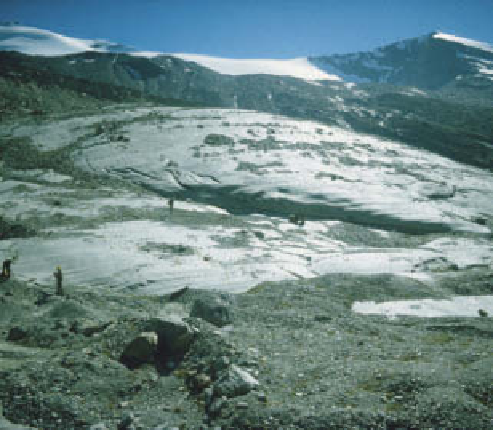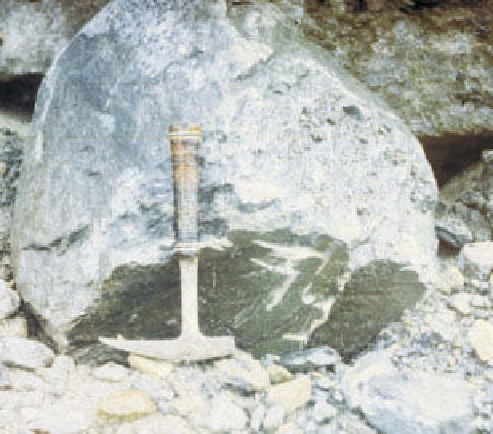Geoscience Reference
In-Depth Information
(a)
(b)
(c)
Findelen glacier, Switzerland (a), with typical abrading tools
during (b) and after (c) extended abrasion.
Photos: Ken Addison
first overcoming the technical difficulty posed by the low
yield stress of ice. Debris is not moved by traction at the
ice-debris-bedrock contact, since the ice readily deforms
when shear stress is applied. Instead, pressure-melting
occurs until the particle is almost wholly absorbed by the
ice, equalizing bedrock-debris and debris-ice stresses.
Gripped by regelation ice in the way that glue grips sand
on sandpaper or tarmac grips chippings on road surfaces,
the tool is now ready to abrade.
Small tools abrade semi-continuous grooves until they
wear out. Larger tools may, through their weight, be held
less firmly over small bedrock concavities and strike
intermittent chips or
chatter marks
out of the substrate
(
Plate 15.7
).
Surface abrasion lowering rates of 1-4 mm
a
-1
(the low range of which exceeds that of fluvial
abrasion) are, in part, a function of ice velocity. This is
because of the frequency of 'abrasive passes' across a point
in the substrate, rather than higher shear stress. Abraded
or crushed debris is flushed away by basal meltwater, or
becomes entrained like the abrading tools by regelation
or a downstream 'freezing-on' process. Abrasion rates are
high enough to have cut deep glacial troughs during the
Quaternary but the fine-grained
rock flour
less than
0·1 mm in diameter it produces does not account for the
abundance of clasts and very large boulders in glacigenic
sediments.
Quarrying and entrainment
In one sense, quarrying presents no problem when we
consider that alpine and outlet glaciers confined to
bedrock channels undercut and destabilize adjacent rock
walls. Repeated mass wasting on to the glacier surface,
including large rock falls and slides, enlarges glacial
troughs and entrains the debris as supraglacial moraine.












































